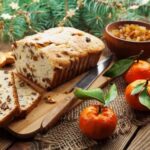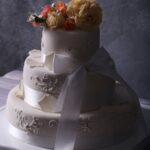Freezing a cake before decorating can be a game-changer for home bakers and professionals alike. Whether you’re looking to streamline your baking process, preserve the freshness of your cakes, or simply make ahead for a special occasion, knowing how to properly freeze a cake is a valuable skill.
In this article, we’ll explore the ins and outs of freezing cakes before decorating, from selecting the best types of cakes for freezing to troubleshooting common issues that may arise.
When it comes to freezing a cake before decorating, the type of cake you choose plays a crucial role in the success of the process. Not all cakes are created equal when it comes to their ability to withstand freezing and maintain their texture and flavor. We will discuss the best types of cakes for freezing and how different ingredients can impact the freezing process.
Preparing the cake for freezing is another essential step in ensuring that your frozen cake turns out just as delicious as if it were freshly baked. From cooling the cake properly to avoiding common pitfalls, we’ll provide tips and tricks for preparing your cake for its deep freeze.
Additionally, we’ll delve into the step-by-step guide on how to wrap your cake for freezing, as proper wrapping is key to preventing freezer burn and preserving the quality of the cake.
In the following sections, we will tackle best practices for freezing and thawing your cakes without compromising their taste and texture. Furthermore, we will cover techniques and tools for decorating frozen cakes while addressing any potential challenges that may arise during this process. Understanding why it’s beneficial to freeze a cake before decorating can help elevate your baking skills and expand your capabilities in creating beautiful, delicious treats.
Choosing the Right Cake
When it comes to freezing a cake before decorating, not all types of cakes are created equal. Some cakes freeze better than others, and choosing the right type can make a big difference in the final result. The best types of cakes for freezing are generally those with a denser texture, such as pound cakes, sponge cakes, and mud cakes. These types of cakes tend to hold up well to freezing and thawing without becoming dry or crumbly.
On the other hand, delicate cake varieties like angel food cake or chiffon cake may not freeze as successfully due to their lighter and airier consistency. The freezing process can cause these types of cakes to become mushy or lose their structure when thawed.
It’s also important to consider whether your chosen cake will be suitable for the specific decoration you have in mind. For example, if you plan on using intricate piping techniques or fondant decorations, a sturdier cake that freezes well will be essential.
In addition to the type of cake, you should also take into account any fillings or frostings that will be used. Cakes with perishable fillings like fresh fruit or cream may not freeze as effectively. Similarly, certain frostings can become discolored or separated when frozen and thawed. It’s important to consider all these factors when selecting the right cake for freezing before decorating.
| Type of Cake | Suitability for Freezing |
|---|---|
| Pound Cake | Excellent – dense texture holds up well |
| Sponge Cake | Good – less dense but still freezes relatively well |
| Mud Cake | Excellent – rich and moist texture ideal for freezing |
| Angel Food Cake/Chiffon Cake | Poor – light texture doesn’t freeze well |
Preparing the Cake for Freezing
Choosing the Right Time to Freeze
Before you start preparing your cake for freezing, it’s important to consider the timing. Make sure you allow enough time for the cake to cool completely after baking before starting the freezing process. Attempting to freeze a warm or hot cake can lead to condensation forming inside the wrapping, which can ruin the texture of your cake.
Leveling and Torting
If you plan to decorate your cake in layers, it’s essential to level and torte each layer before freezing. Use a long serrated knife or a cake leveler to carefully remove any uneven tops from each layer and then slice them horizontally into even layers if needed. This will ensure that each layer is uniform in size and will result in a professional-looking finished product.
Protecting Delicate Decorations
If your cake already has delicate decorations such as fondant accents or intricate piping, you’ll want to take extra care when preparing it for freezing. One common method is to place the decorated cake in the freezer for 30-60 minutes, or until the decorations are firm but not frozen solid.
Then, wrap the cake carefully with plastic wrap and foil as normal, being cautious not to smudge or damage any of the decorations. This will help preserve the integrity of the decorations during freezing and thawing.
How to Wrap the Cake for Freezing
When preparing to freeze a cake before decorating, it is essential to properly wrap the cake to ensure it maintains its moisture and texture. Follow this step-by-step guide to properly wrap your cake for freezing:
Steps to Wrap the Cake for Freezing:
1. Allow the Cake to Cool: Once the cake has finished baking, allow it to cool completely before attempting to wrap it for freezing. Attempting to wrap a warm cake can result in condensation and freezer burn.
2. Level the Cake: Use a serrated knife or a cake leveler to ensure the top of the cake is flat and even. This will make wrapping the cake easier and also provide a stable base for decorating after thawing.
3. Double-wrap with Plastic Wrap: Begin by tightly wrapping the entire cake with plastic wrap, ensuring that there are no gaps or exposed areas. This initial layer will help seal in moisture and prevent freezer burn.
4. Foil Wrap: After wrapping the cake in plastic wrap, proceed to wrap it in aluminum foil. This will provide an extra layer of protection against freezer burn and also help maintain the shape of the cake during freezing.
5. Label and Date: Once the cake is securely wrapped, be sure to label it with the date of preparation and type of cake for easy identification when it comes time to decorate.
By following these steps, you can effectively prepare your cake for freezing while maintaining its quality for decorating at a later time.
Freezing and Thawing
When it comes to freezing and thawing a cake, there are some best practices that can help maintain the quality of the cake so that it is in optimal condition for decorating. One of the most important things to remember is to allow the cake to cool completely before attempting to freeze it. This will prevent excess moisture from forming ice crystals on the surface of the cake, which can affect its texture and taste.
Once the cake has been properly cooled, it should be wrapped tightly in plastic wrap or aluminum foil to prevent any air from getting in, as this can cause freezer burn. Another option is to place the wrapped cake in an airtight container. It’s important to label the container with the date of freezing so that you can keep track of how long it has been in the freezer.
When it comes time to thaw the cake, it’s best to do so slowly in order to preserve its moisture and texture. The cake should be removed from the freezer and placed in the refrigerator for several hours or even overnight. Once thawed, it should be kept wrapped until it reaches room temperature. Following these best practices for freezing and thawing a cake will ensure that it maintains its quality for decorating.
| Freezing and Thawing Tips | Benefits |
|---|---|
| Cool cake completely before freezing | Preserves texture and taste |
| Wrap tightly with plastic wrap or aluminum foil | Prevents freezer burn |
| Thaw slowly in refrigerator | Preserves moisture |
Decorating Frozen Cakes
Decorating a frozen cake requires some specific tools and techniques to ensure the best results. By freezing a cake before decorating, you are able to work with a firmer and more stable surface, making it easier to handle and decorate. In this section, we will discuss the essential tools and techniques you will need to successfully decorate a frozen cake.
Tools for Decorating Frozen Cakes
When it comes to decorating a frozen cake, having the right tools can make all the difference. Some essential tools for decorating frozen cakes include an offset spatula for applying and smoothing out frosting, a bench scraper for creating clean edges, and piping bags and tips for adding decorative details. It’s also helpful to have a turntable to easily rotate the cake while decorating, as well as a cake leveler or serrated knife for trimming any uneven layers.
Techniques for Decorating Frozen Cakes
One of the key benefits of decorating a frozen cake is that it allows you to work with more precision and control. When applying frosting to a frozen cake, start with a crumb coat – a thin layer of frosting that seals in any crumbs – and then chill the cake again before adding the final layer of frosting.
This will help create a smooth and flawless finish. As for other decorative techniques such as piping, fondant decoration, or applying edible embellishments, working with a frozen cake provides stability and prevents delicate decorations from melting or becoming misshapen.
Tips for Decorating Frozen Cakes
To ensure successful decoration of a frozen cake, it’s important to keep in mind that the cake may need to thaw slightly before serving. While frozen cakes are ideal for decorating purposes, allowing them to sit at room temperature for about 30 minutes before serving will ensure that they are easy to slice and enjoy.
Additionally, if using delicate decorations such as fresh flowers or intricate sugar work, these should be added after the cake has thawed slightly so they remain vibrant and intact. With these tools and techniques in mind, decorating a frozen cake can be an enjoyable and rewarding experience that yields professional-looking results.
Troubleshooting
When freezing a cake before decorating, it’s essential to be aware of common issues that may arise during the process. By being prepared for these issues, you can troubleshoot and address them effectively, ensuring that your frozen cake maintains its quality and taste.
1. Freezer Burn: One common issue when freezing cakes is the development of freezer burn, which can affect the texture and flavor of the cake. To prevent this, it’s important to wrap the cake properly using airtight materials such as plastic wrap or aluminum foil. If freezer burn does occur, carefully trim off any affected areas before decorating the cake.
2. Condensation: Another issue that may arise when freezing cakes is condensation, which can cause moisture to collect on the surface of the cake. To prevent condensation, allow the cake to cool completely before wrapping it for freezing. Additionally, when thawing the cake, remove the wrapping only when it has reached room temperature to avoid moisture buildup.
3. Loss of Flavor: Freezing can sometimes lead to a loss of flavor in cakes if not done properly. To combat this issue, consider brushing the cake layers with a simple syrup before freezing to help preserve moisture and enhance flavor. Additionally, using high-quality ingredients in your cake recipe can help maintain its delicious taste even after freezing.
By being mindful of these common issues and implementing strategies to prevent or address them, you can ensure that your frozen cake turns out just as delicious as if it were freshly baked. Troubleshooting these issues will allow you to confidently freeze cakes for decorating without compromising their quality.
Final Thoughts
In conclusion, freezing a cake before decorating can offer numerous benefits for both professional bakers and home bakers alike. By taking the time to freeze your cake, you can ensure that it stays moist and fresh while also making it easier to work with during the decorating process. This can be especially helpful when working on intricate designs or specialty cakes that require more time and attention to detail.
Additionally, freezing your cake in advance can also help you better manage your time and schedule. By having a few pre-frozen cakes on hand, you can take on more orders or be better prepared for special occasions without feeling rushed or overwhelmed. This can ultimately lead to a more enjoyable decorating experience and higher quality results.
Overall, the benefits of freezing cakes for decorating far outweigh any potential drawbacks. With the right techniques and practices in place, you can confidently freeze your cakes knowing that they will still turn out beautifully when it comes time to add the finishing touches. Whether you’re a professional baker looking to streamline your process or a home baker wanting to elevate your skills, consider incorporating freezing into your cake decorating routine for improved quality and convenience.
Frequently Asked Questions
Can You Freeze Cake Before Decorating?
Yes, you can freeze a cake before decorating it. Freezing the cake can actually make it easier to work with when it comes time to frost and decorate, especially if you want to create intricate designs or use fondant. Just be sure to wrap the cake well in plastic wrap and then aluminum foil before placing it in the freezer.
What Do You Wrap a Cake in Before Freezing It?
Before freezing a cake, it’s best to wrap it tightly in plastic wrap to seal in moisture and prevent any air from reaching the cake. This will help maintain the cake’s freshness and prevent freezer burn.
After wrapping the cake in plastic wrap, it’s a good idea to further protect it by wrapping it in aluminum foil or placing it in an airtight container.
What Is the Best Way to Freeze a Cake That Has Been Iced or Frosted?
The best way to freeze a cake that has been iced or frosted is to first chill the icing or frosting so that it firms up. Once firm, cover the entire cake with plastic wrap, making sure all surfaces are tightly sealed.
Then, wrap the entire cake again with aluminum foil or place it in an airtight container before putting it into the freezer. This will help preserve both the texture and flavor of the icing while preventing any potential damage during freezing and thawing.

Welcome to my blog about home and family. This blog is a place where I will share my thoughts, ideas, and experiences related to these important topics. I am a stay-at-home mom with two young children. I hope you enjoy reading it! and may find some helpful tips and ideas that will make your home and family life even better!





